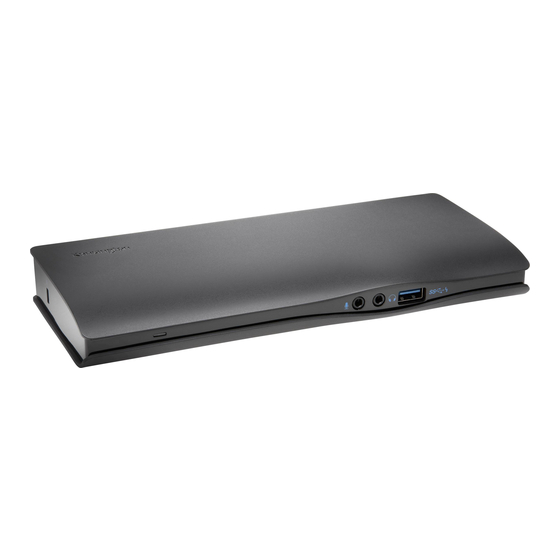Advertisement
Quick Links
Frequently Asked Questions (FAQ's) on USB‐C Technology and
Troubleshooting Guide for Kensington SD4500 and SD4600P
USB‐C Docking Stations
Not all USB‐C devices are created equal. While the new USB‐C ports are very
convenient, each manufacturer can set up each model to support different levels of
data, video and power. As such, compatibility with productivity accessories like the
Kensington SD4500 and SD4600P docks can vary.
USB‐C is a new technology and, unfortunately, it's also a complicated technology.
Shoppers need to make informed choices to ensure the accessory they buy is
compatible with their host device, and can't assume that every accessory will work
seamlessly. When the host device's USB‐C capabilities are fully compatible with our
docking station features and all software on your host device have been updated,
the performance should be nearly flawless.
If you have questions about USB‐C, please take a look at the following Frequently
Asked Questions (FAQ's).
Things to Know Before You Buy/Common Issues
Your laptop or device must have a USB‐C port. (Using an adapter on a USB 3.0
port will not work.)
Your device must be running Windows 10, 8.1 or MACOS (Sierra) or Mac OS X
Yosemite (10.10) or later, or Chrome OS.
For video output, your USB‐C laptop or hybrid must support DisplayPort Alt.
Mode over USB‐C or video signals cannot be sent to your monitors.
For video output, you must use a direct HDMI‐to‐HDMI cable or DisplayPort‐
to‐DisplayPort cable. Connecting via a passive adapter will not allow video
signals to transmit.
Dual video is only supported on Windows 10 and 8.1 devices (Mac and
Chrome USB‐C devices do not support dual video).
For the SD4600P dock to provide charging, your USB‐C device must be
designed to support Power Delivery (PD). Not all USB‐C devices support PD.
Mac OS devices need to perform a one‐time software download to support
the Ethernet port.
A DIVISION OF ACCO BRANDS CORPORATION
Advertisement


















Need help?
Do you have a question about the SD4500 and is the answer not in the manual?
Questions and answers